
This article is part of TechRadar's Get Fit For '25 series. All week long, we're publishing articles relating to fitness, health and the tech we're using to improve in 2025. You can view all the other articles in this series here.
I love a product that’s easy to install and even easier to use. I think that’s why I’ve been put off e-bike converter kits. They just look too complicated. I’ve therefore stuck to the binary of traditional push bikes or testing the best electric bikes. I have both in my garage and I love being able to choose either option each time I go out on a ride.
It seems that I no longer need two bikes to make the choice any more. With start-up Skarper’s new clip-on electric motor and drive system, Skarper claims that it’s easier than ever to convert your bicycle into a versatile, high-performance e-bike. Could this be the future of electric cycling, and match even the best folding e-bikes for versatility?
Skarper sent me a bike with all the Skarper devices fully installed. I didn’t therefore get a chance to run through the installation, but from watching multiple process videos, it looks pretty straightforward.
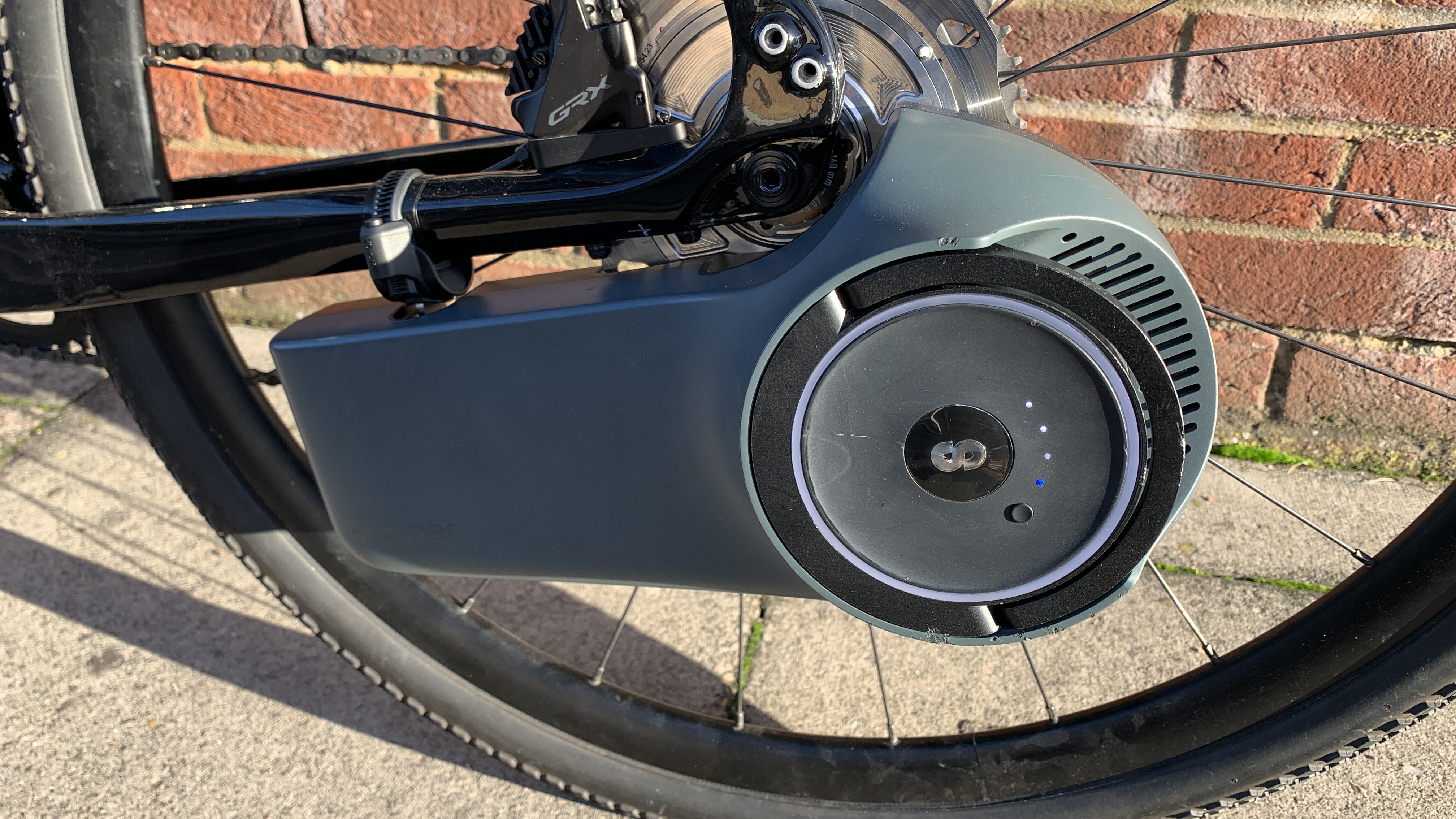
Skarper e-bike converter: At a glance
- What is it? A device to convert your bicycle into a versatile high-performance e-bike.
- Who is it for? Anyone who wants to be able to turn their regular bikes into e-bikes.
- How much does it cost? £1,495.00 (approx $1900 / AU$3000)
Customers are sent a Skarper drive unit, a DiskDrive brake rotor, a DynamicClimb pedal sensor, and a chainstay attachment. Other than a few tools, nothing else is required to install the complete Skarper system. It’s worth noting that the Skarper will only work on bikes that have disc brakes. If you have a different type of brake system, such as [X/Y], then you’ll need to opt for a more standard converter kit.
Installation begins by replacing the original brake disc with the Skarper DiskDrive brake rotor. It is this rotor that the drive unit is attached to, while the small chainstay attachment helps keep the drive unit in place. The final thing to install is the DynamicClimb pedal sensor, which clips easily around the pedal crank arm. Experienced bike mechanics can do all this in two or three minutes, but most riders will probably require around 10 to 15 minutes of graft to get the disc brake and drive unit set up. However, once this initial effort is over and done with, the motor can be attached and detached in seconds.
I’ll dive more into how it works in a minute but let me just say that the Skarper provided me with one of the best e-bike experiences I’ve ever had. It reminded me of the Tenways CGO600 Pro that I reviewed a while back. That feeling of high performance and incredible motor responsiveness… the Skarper delivered the same.
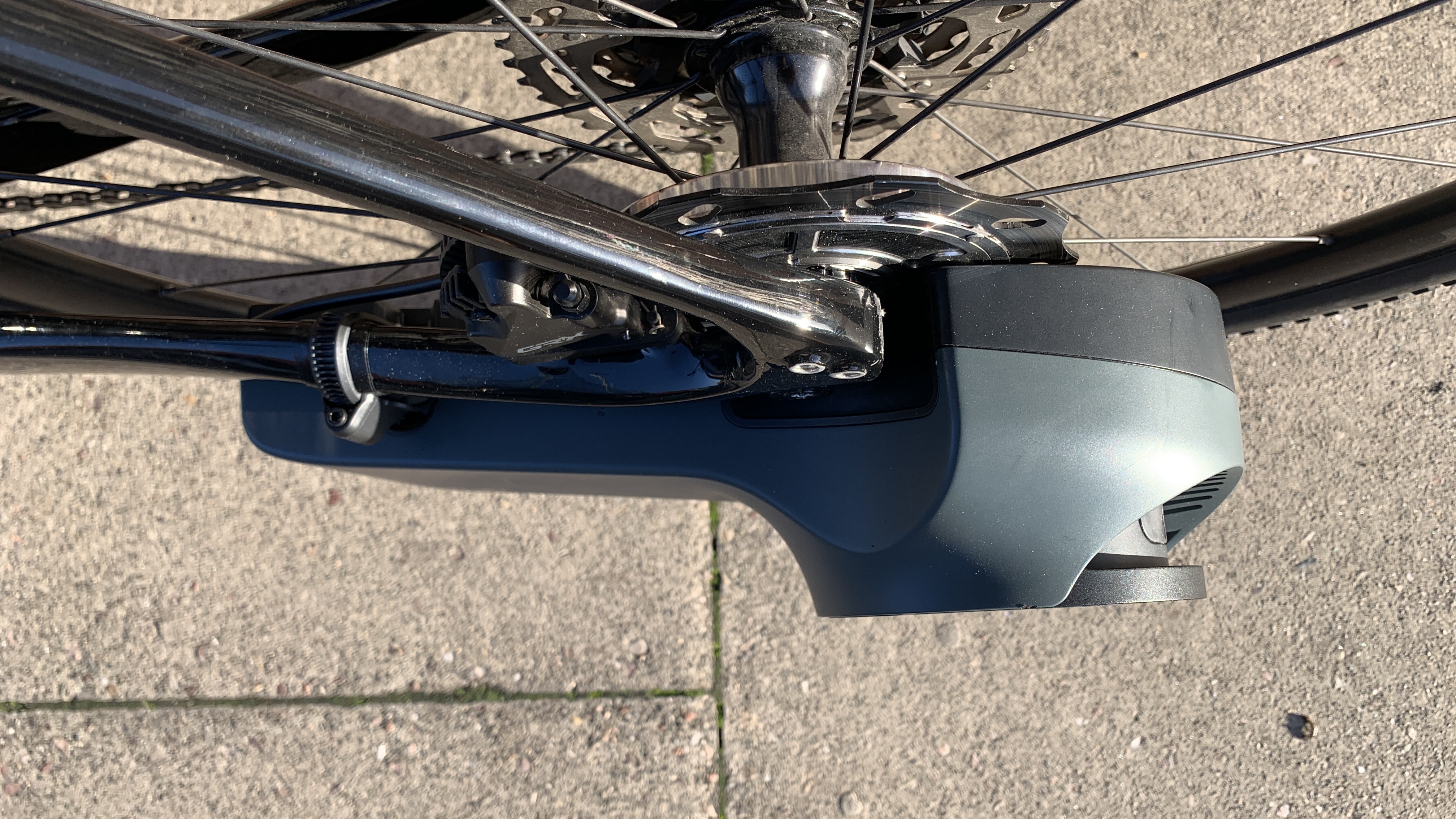
As soon as I hopped on the Black Series Multistrada, I could see that this was no amateur device hoping for a seat at the table. The Skarper is instead already a remarkably robust and feature-rich unit that provides users with power, speed, and flexibility. I’m used to e-bikes that take one or two rotations of the pedal before the motor kicks in. Not so with the Skarper. It kicks in so quickly that you really have to adjust your riding style, especially around tight corners and when moving off from standing still.
Once I got used to the instant responsiveness, I was amazed by the power. The Skarper gets you up to 25 kph with very little trouble at all. When opting for the electrical assist, I had to put very little effort in. I missed the ability to be able to move through multiple pedal assist modes but if you want something that will make your ride simple and effortless, then the Skarper is perfect. It is possible to choose between Eco and Turbo modes if you want a certain level of control, but it’s not as much customization as I’m used to.
The power comes through the DiskDrive brake rotor, a gearbox that is built into the space behind the disc brake rotor. It’s a complete sealed unit, which not only has the advantage of being maintenance-free but also completely waterproof; as a result, I didn’t have to worry about riding in wet conditions or ploughing through deep puddles. I was so confident in the engineering that I didn’t give its robustness credentials a second thought.
The brake rotor hooks beautifully into the brushless motor drive unit, which delivers 45 Nm of torque, and boy can you feel it. It’s a standard amount of torque but acceleration from 0 to 25 kph seems almost instant. All you need to be concerned about is keeping an eye out for the drivers around you, who are not expecting you to get off the start line so quickly.
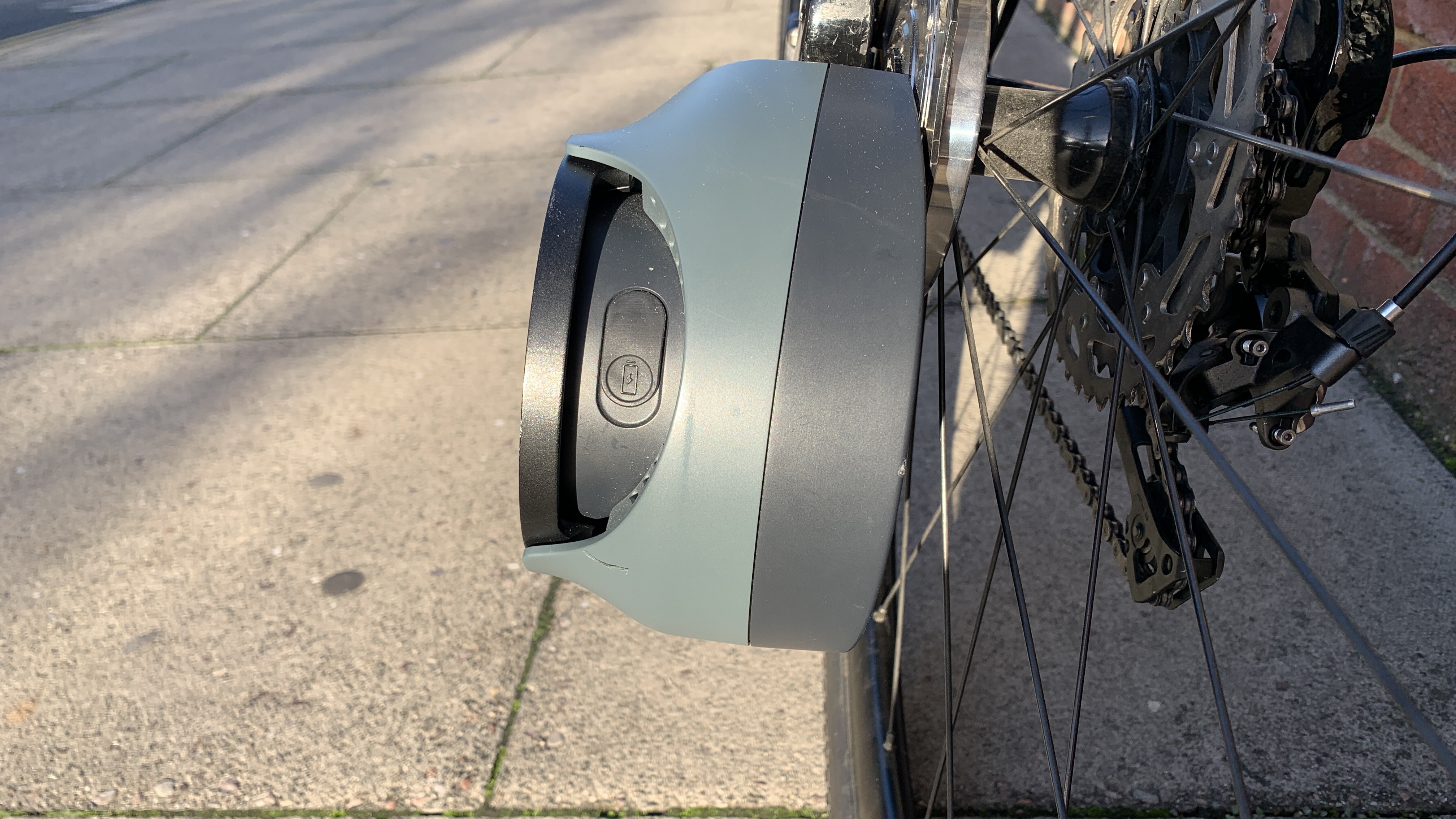
The only area where I found the Skarper a little lacking was on steeper inclines. Rather than opting for multiple pedal assist modes, Skarper has engineered a DynamicClimb pedal sensor, which is designed to provide more power to the motor when its needed. This certainly helps with managing battery life, but I prefer to be more in control; maybe a hybrid between the dynamic sensor and a manual mode shifter, such as the Tenways CGO600 Pro, could work.
I took the Skarper around flat city streets and had no problem, but when I took it on more challenging hills through the rural countryside, it definitely struggled more. At times I couldn’t even get it up to the top speed of 25 kph. Maybe I’m asking too much, but I’m sure in a few years time technology will have developed to the point of being able to deliver greater torque on steeper inclines. We’ll see.
When arriving at a destination, removing the DiskDrive was simple and quick. There are no fiddly catches or locks to get in the way. I wouldn’t generally leave an e-bike battery unattended, but I did ask Skarper representatives if they were planning on developing any sort of locking system. They said they weren’t, because no locks can truly stop e-bike thieves and therefore the best protection is to remove it and take it with you. I would personally like the option, as you might not want to always take it with you.
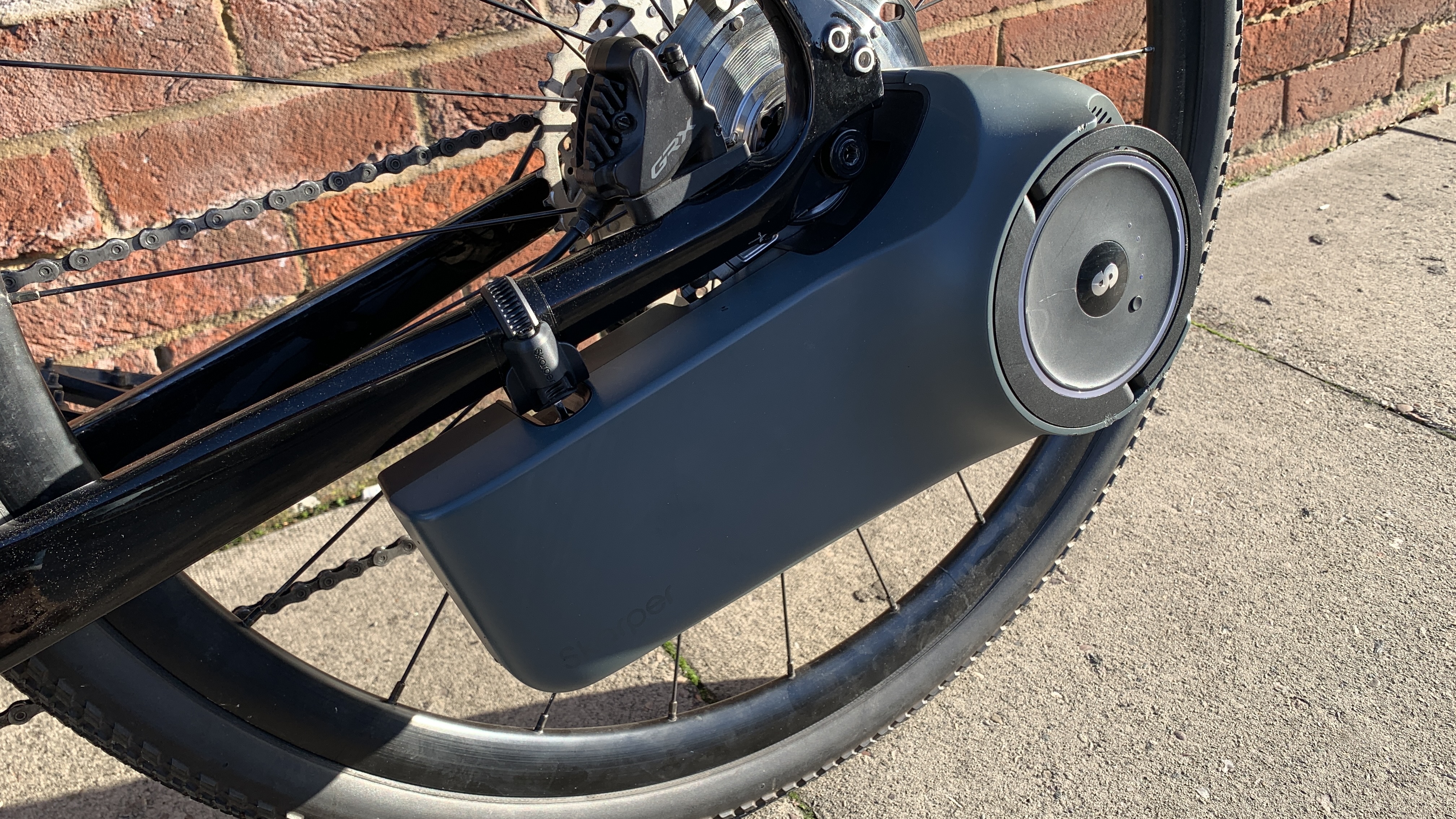
Talking of carrying it around, the unit weighs approximately 4.5 kg so it’s not light. I certainly didn’t want to carry it around more than I had to. The catch for removing and replacing the Skarper doubles up as a handle. Unfortunately, it’s offset to one side, which makes carrying the device more awkward than it needs to be. If Skarper can figure out a way to either move this handle to be central to the unit or provide a secondary handle, then I think that would be more ergonomic. To its credit, Skarper does sell a purpose-made bag that has a pouch specifically designed for carrying the battery, but I would say that this bag is a must-have for anyone needing to walk any noticeable distance with the Skarper unit in hand. It would have been nice to include rather than sell separately.
Being able to remove the Skarper makes it easy to charge either in your home or at the office. This can be done using the provided charger, with a full charge taking only 2.5 hours. This is a lot quicker than many e-bikes I’ve tested, but it’s largely possible due to the limited range. In ECO mode, users can get up to 50 km compared to only 30 km in turbo mode. This isn’t a terrible range but it’s far from the best. Considering my daily commute is around 22 km, that doesn’t leave me much in the tank for any detours or problems on route. I would expect this range to improve with future iterations, but for a first product, it’s certainly not bad. I would compare it to my experience with the Brompton C Line Explore.
Throughout my experience of using the Skarper, there was one noticeable missing piece. I couldn’t put my finger on it to start with but after a while I realised what it was. There was simply no screen or app that was enabling me to interact with the device. Skarper has done a great job of providing extensive on-board controls but they’re not quite enough.
For example, it wasn’t possible to adjust mode or see remaining battery life mid-ride. I loved the simplicity of the ride, but couldn’t help feeling like I was missing that extra level of control. All of this could probably be provided through a handlebar-mounted display, but I think it would be far better to provide an app. It was time to get in touch with Uri at Skarper again.
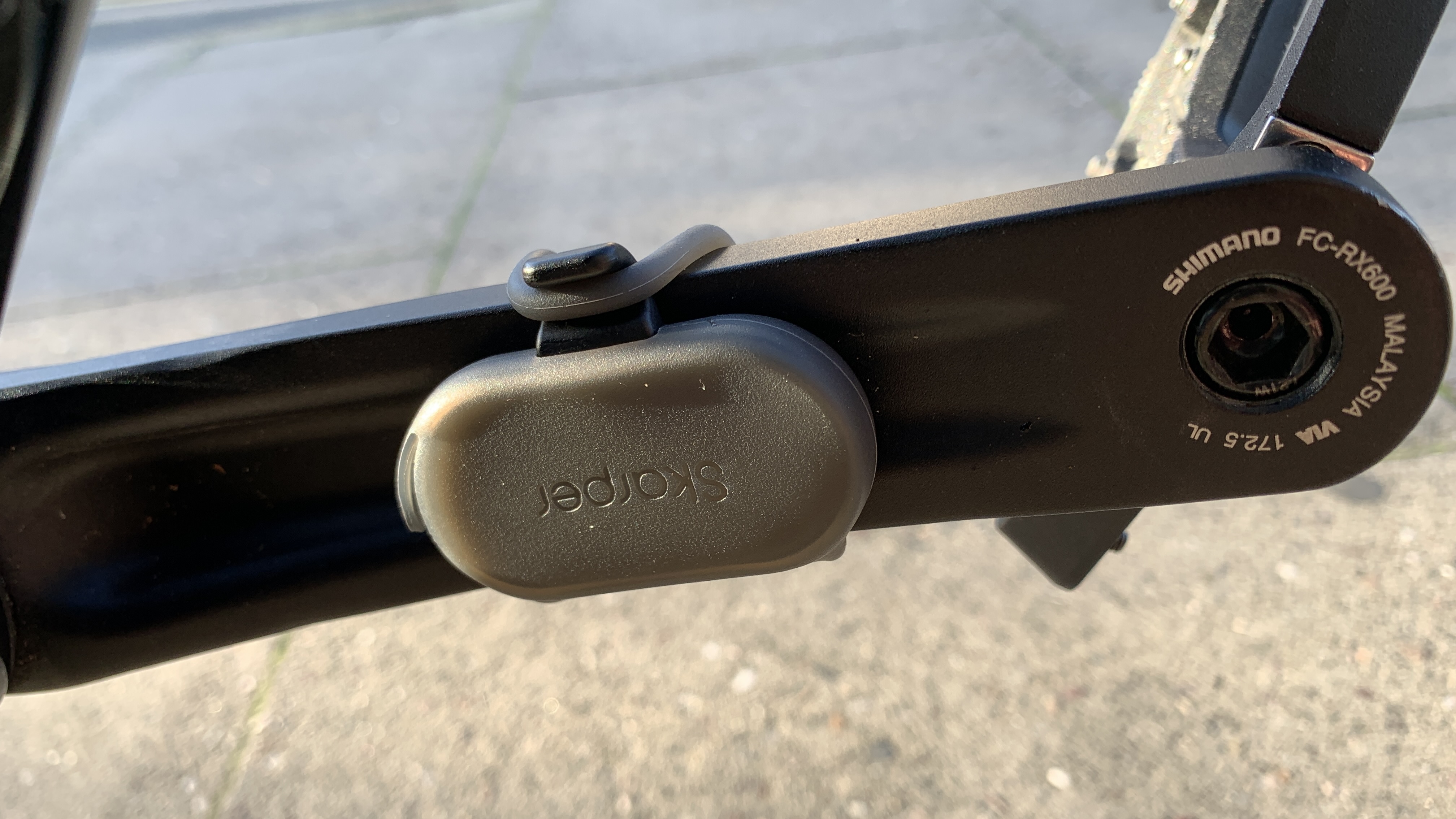
Uri told me that they have plans to develop an app in 2025, but have already done a lot of the hard work of making the Skarper device future-proof. All units have the functionality to connect and communicate with an app, a handlebar display and even cycling computers that have their own app marketplaces. Early adopters will therefore not be at any disadvantage.
The app will likely provide users with the ability to change modes, see battery status and interact with Skarper in other ways. This seems like the logical next step for developing a more well-rounded riding experience.
Because this is the first of its kind, I truly felt like I was experiencing something special; I wonder if that’s how the first users of the Apple iPhone or the Brompton bike felt. It’s that moment when you realise a whole industry is being redefined right before your eyes. The e-bike market is exploding with plenty of great options, but there are still many gaps in the market. Skarper wants to completely disrupt the industry and, if my experience is anything to go by, they’ve just gone and done it.







